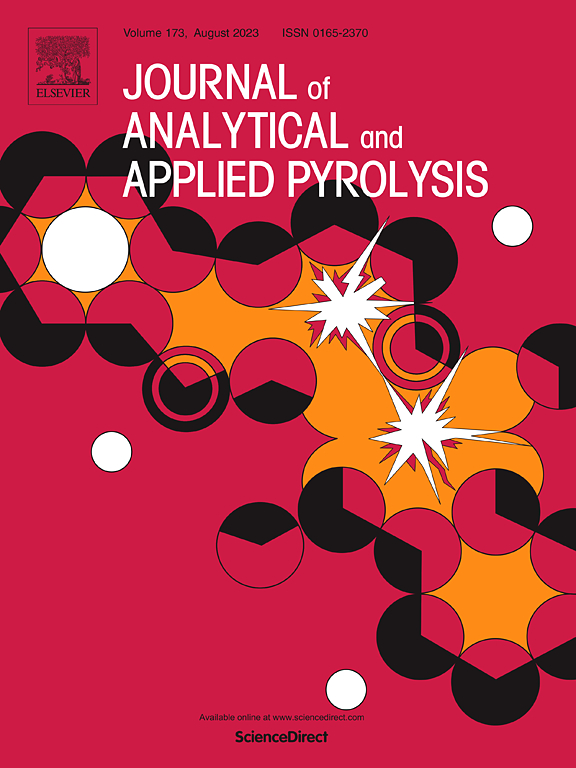核壳结构HZSM-5@silicalite-1白杨木催化热解制备轻芳烃催化剂的合成
IF 5.8
2区 化学
Q1 CHEMISTRY, ANALYTICAL
引用次数: 0
摘要
采用核壳分级HZSM-5@Silicalite-1催化剂对碳化杨木的快速催化热解(CFP)进行了研究,以提高轻质芳烃的产量。在这项工作中,碳化脱氧预处理(TDP)显著降低了杨木的氧含量,在260℃时达到最佳脱氧,得到了热解反应活性增强的碳化固体产物。采用外延生长法制备了核壳级联HZSM-5@Silicalite-1催化剂,并通过BET、NH3-TPD、SEM和TEM对催化剂进行了表征。该催化剂具有微介孔结构,抑制了外部焦化,延长了中间扩散,从而提高了芳烃选择性。CFP系统优化表明,当催化剂与原料比为4:1、CFP温度为800℃时,热解中间体的脱挥发增强、传质阻力小、Brønsted酸催化脱氧/芳化效率高,BTX(5.56 × 10⁸a.u./mg)和总芳烃(3.15 × 10⁸a.u./mg)的产率最高。该研究表明,将适度焙烧与定制的核壳催化剂相结合,可以协同提高BTX的产量,为生物质衍生生物燃料的升级提供了可行的策略。本文章由计算机程序翻译,如有差异,请以英文原文为准。
Synthesis of core–shell structured HZSM-5@silicalite-1 catalyst for production of light aromatics from catalytic pyrolysis of torrefied poplar wood
Catalytic fast pyrolysis (CFP) of torrefied poplar wood was investigated to enhance light aromatics production using a core-shell hierarchical HZSM-5@Silicalite-1 catalyst. In this work, torrefaction deoxygenation pretreatment (TDP) significantly reduced oxygen content in poplar wood, with optimal deoxygenation achieved at 260 ºC, yielding torrefied solid product with enhanced pyrolysis reactivity. The core-shell hierarchical HZSM-5@Silicalite-1 catalyst was synthesized via epitaxial growth and characterized by BET, NH3-TPD, SEM, and TEM, exhibited a micro-mesoporous structure that suppressed external coking and prolonged intermediate diffusion, thereby improving aromatics selectivity. CFP systematic optimization revealed that the yield of BTX (5.56 × 10⁸ a.u./mg) and total aromatics (3.15 × 10⁸ a.u./mg) were maximized with a catalyst-to-feedstock ratio of 4:1 and CFP temperature of 800 ºC, due to the intensified devolatilization, low mass transfer resistance, and efficient Brønsted acid catalysis for the deoxygenation/aromatization of pyrolysis intermediates. This study demonstrated that coupling moderate torrefaction with tailored core-shell catalysts synergistically could enhance the production of BTX, offering a viable strategy for upgrading biomass-derived biofuels.
求助全文
通过发布文献求助,成功后即可免费获取论文全文。
去求助
来源期刊
CiteScore
9.10
自引率
11.70%
发文量
340
审稿时长
44 days
期刊介绍:
The Journal of Analytical and Applied Pyrolysis (JAAP) is devoted to the publication of papers dealing with innovative applications of pyrolysis processes, the characterization of products related to pyrolysis reactions, and investigations of reaction mechanism. To be considered by JAAP, a manuscript should present significant progress in these topics. The novelty must be satisfactorily argued in the cover letter. A manuscript with a cover letter to the editor not addressing the novelty is likely to be rejected without review.

 求助内容:
求助内容: 应助结果提醒方式:
应助结果提醒方式:


